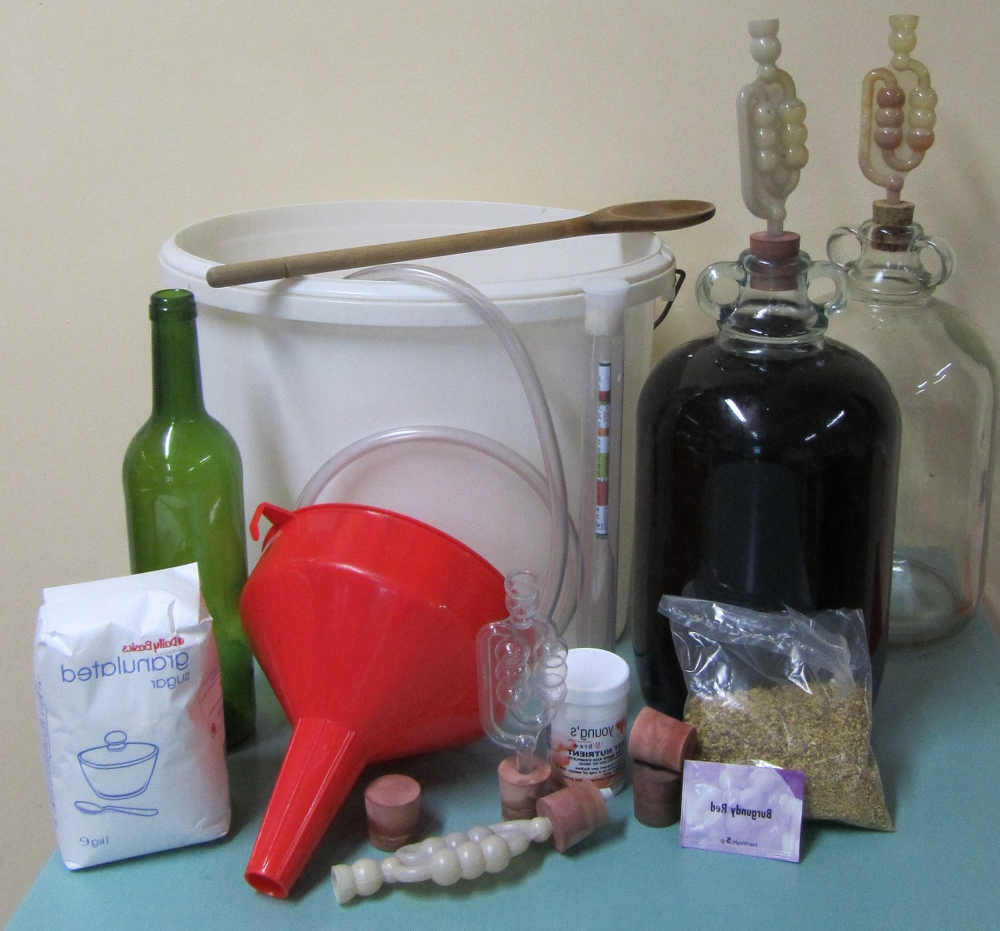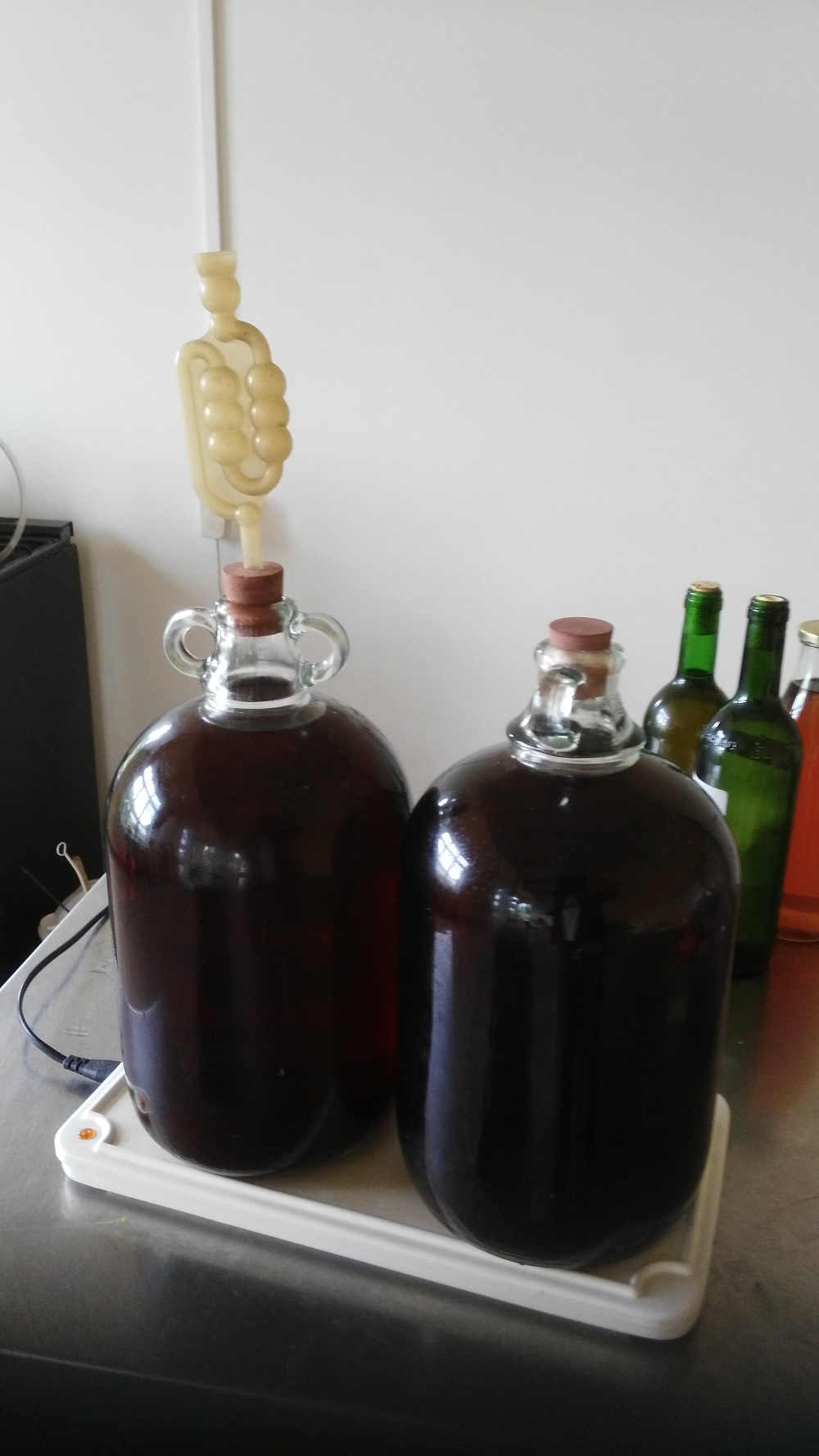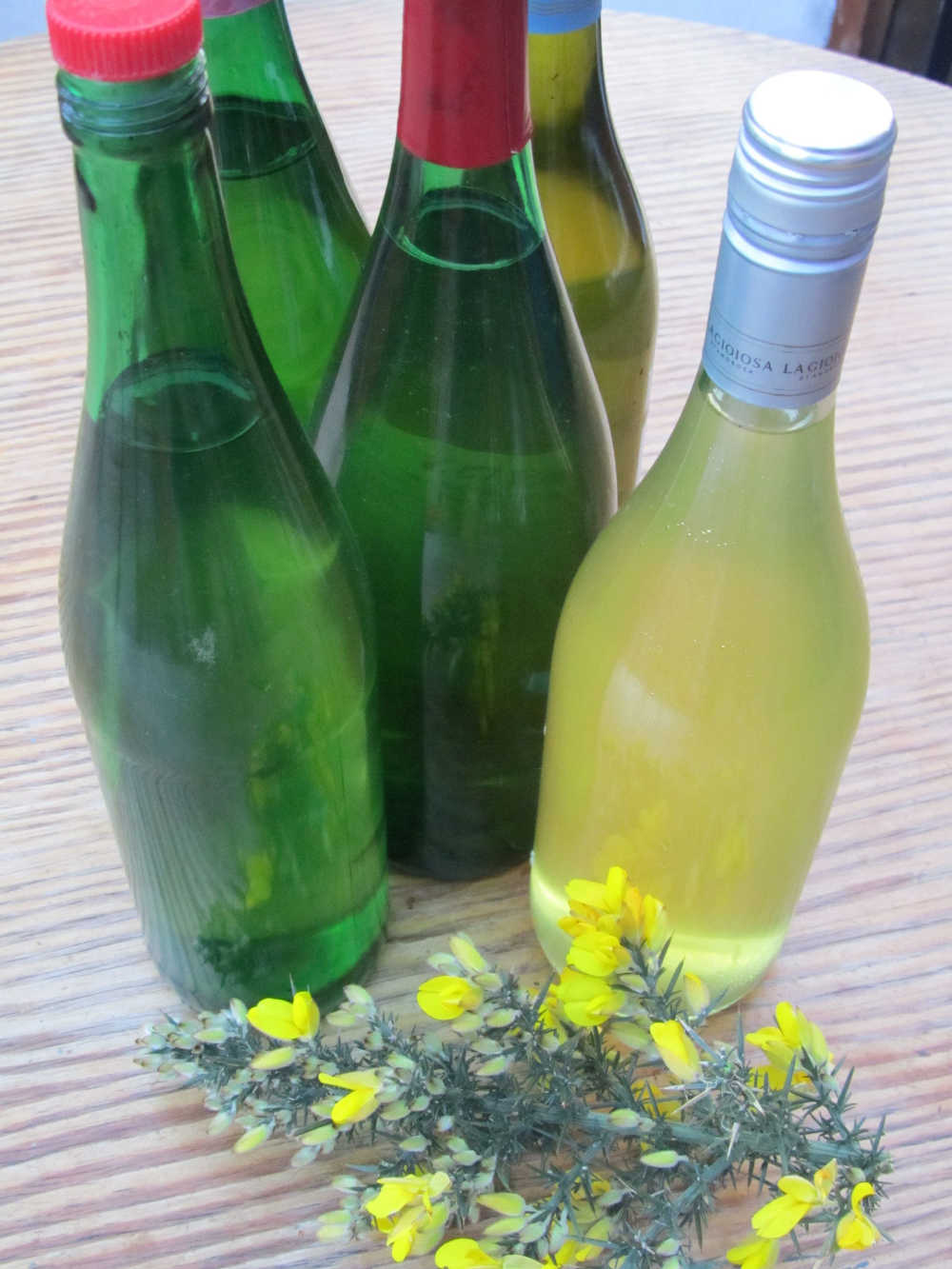Country Wine Making - In Season

by Hans Wieland
I still remember that Easter Day 1985 when we looked at that cottage in the wilds of Leitrim, near Manorhamilton, climbed through the window and stood in a damp, deserted living room full of books. The one that fell into my hand was “First Steps in Winemaking” by C.J.J.Berry. (What a name!) The rest is history as they say.
Making your own wine is probably one of the most satisfying ways of preserving the produce of your garden and the surrounding hedgerows. With a bit of patience it is easy to achieve and can become a highly economical pastime.
Buying wine in Ireland is still pretty expensive compared to buying wine on the continent and a lot of seasoned home wine makers ‘swear’ on the quality of their home produced ‘country wines’ as they call them.
A country wine is any wine not made from grapes, be it fruit, flowers, vegetables or grain. Many people consider the only true wine to be made from grapes due to its undoubted full flavour and near perfect balance of ingredients for fermentation, but popular fruit wines are made from apples, gooseberries, plums, elderberries and sloe. Elderberry for example makes an excellent wine when blended with apple, sloe, damsons or even banana.
All wines require a good balance of acids for fermentation and tannin to clarify and giving it zest.

Basis requirements to make wine
The four essential ingredients are yeast, sugar, flavour and water.
Sometimes it is necessary to add enzymes to aid the clearing of the wine from excessive pectin, starch or protein.
Yeast is the most important ingredient. It is a living organism and is responsible for the fermentation process. There are many specialist wine yeasts available. Put the yeast in a sugary solution and it begins to multiply vigorously, turning approximately half of the sugar into alcohol and the rest to carbon dioxide. Plain white sugar is actually better than brown and more natural sugars, because the latter add an unwanted and distracting flavour to the wine. Organic people have to compromise here!
Fermentation
The fermentation takes place in two stages:
First the aerobic stage (with air), when sugar and yeast are added to “must” or the pulp of the basic ingredient (fruits, vegetables, grains) in a plastic bucket and covered with a muslin. This fermentation needs about 10 days at a temperature of around 21 degrees Celsius (Good room temperature).
The second stage takes place without air; this is the anaerobic stage, which needs a lower temperature of about 16 degrees Celsius. At this stage you need a bit of special equipment like a demijohn or fermentation jar and an airlock. It is important that a steady temperature throughout fermentation is maintained. A slow, quiet second fermentation usually makes a better wine than a fast and vigorous one.
During the second fermentation the use of an airlock is necessary, which both cuts off air supply to the yeast and allows carbon dioxide out ; it prevents the invasion of other bacteria which spoils the wine and turns it into vinegar. Fermentation continues until all sugars have been digested by the yeast bacteria. The alcohol level has then reached around 15%, which prevents any more yeast activity.
Before you can bottle and store you must siphon off the wine from the deposited solids. This process is called racking and can be repeated 2 months later. After some 5 months the clear wine can be bottled.

RECIPE:
Here is a simple recipe that I first tried using windfalls.
Apple Wine:
Ingredients:
2.75 kg of apples
4.5 litres of water
1 kg of sugar
Juice and thinly peeled rind of 1 lemon
150 mls of white concentrate
1 teaspoon of citric acid
yeast and yeast nutrient
Method:
Wash and cut up the apples, skins, brown patches and all.
Simmer 10 -15 minutes in 4.5 litres of water.
Strain liquid on to the sugar and the thinly peeled rind of lemon. Stir well.
When lukewarm add the juice of the lemon, the yeast and the yeast nutrient to the liquid; add the concentrate, cover and leave for 24 hours in a warm place, then pour into a fermenting jar and insert air lock.
Leave in a warm, dry place to ferment for 4 weeks.
Siphon off into a clean dry storage jar and ferment out under air lock.
Then siphon off and mature for 6 month before bottling.
---
Hans Wieland, moved from Germany with his wife Gaby and their young family in 1985 and they now live in Cliffony, Co Sligo. He was an organic cheese maker for 20 years, loves gardening and is an expert in storing and preserving. He has worked and taught at The Organic Centre, Rossinver, Co. Leitrim since 1997. Wine and cider making are among the topics covered in classes at The Organic Centre






There are currently no comments
Leave a comment
Not a member? Register for your free membership now!
Or leave a comment by logging in with: